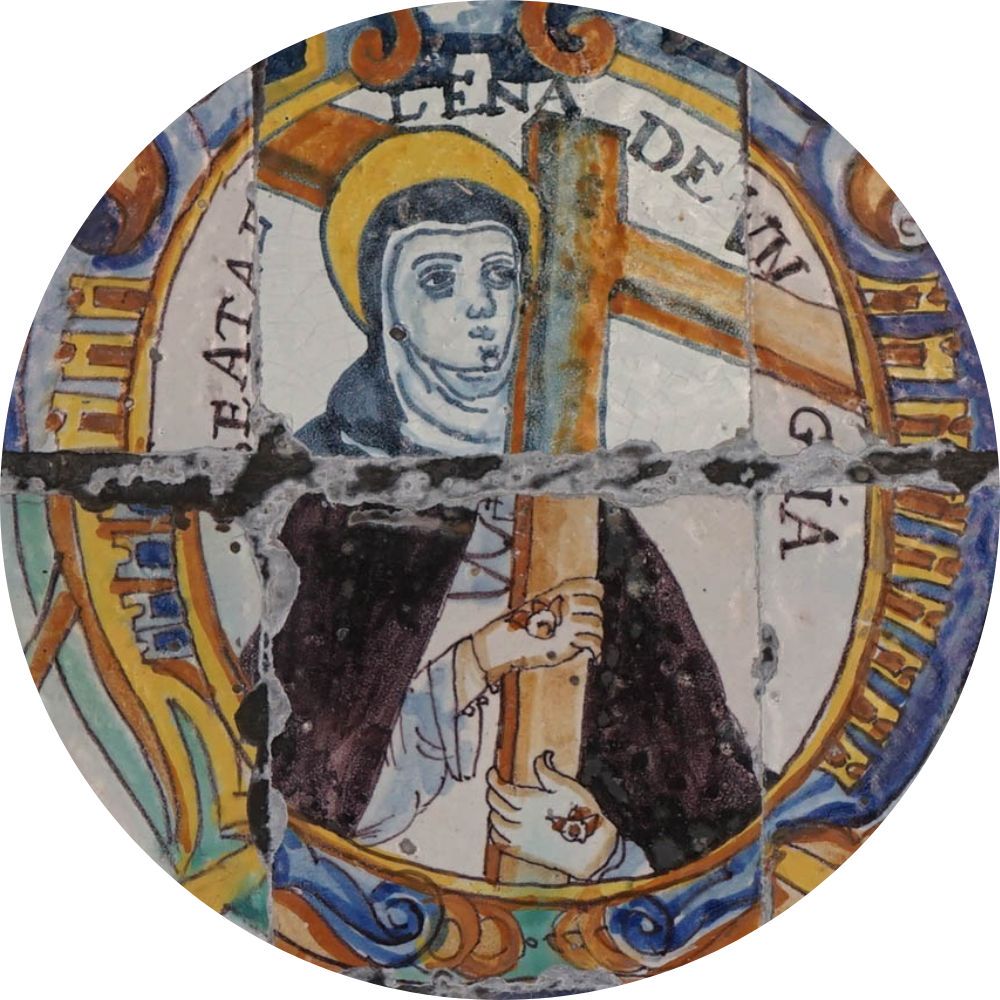Helena de Veszprém
Helena de Veszprém
(ca. 1200-1270)
She was born around 1200 in Verona. Her origin is unknown. All that is known is that she spoke Hungarian and in 1222 entered a Dominican convent in Veszprém, where she took the name Helena (Ilona). It is also known that she was a widow. She quickly became a superior there. For 7 years she was a teacher and tutor of the Hungarian princess Saint Margaret, daughter of King Bela IV of Hungary, born in 1242, accompanied by many miraculous phenomena. For example, while praying, she floated to the ground, and while receiving Holy Communion, Christ himself appeared to her. Flowers bloomed on the ground where she walked, and as she touched a withered plant, it revived and bloomed again. As she entered the dark church, where the sisters gathered for prayers, two candles on the altar were immediately lit. Helena had a special veneration for the Passion of Christ. Before her death, Helena received stigmata and was endowed with mystical visions. On November 9, 1270, on her deathbed, she saw Christ and a large group of saints.
Twelve years after her death, her mortal remains were interred in a tomb specially prepared for her in the convent church. Five years later, it was reported that miracles were to be performed at her tomb. This prompted the exhumation of her body. It turned out to be pristine and gave off a heavenly scent. The stigmata wounds, closed shortly before his death, reopened. The two fingers that the priest then inserted into the wound in his side were bloodied when removed.
Helena as the spiritual mother of St. Margaret of Hungary, shaped her into a person who later contributed to the spiritual rebirth of her country.
In a Dominican liturgical calendar published in the 18th century entitled Dni polskie, Polish Dominican Br. Michał Siejkowski reports that she is blessed and "was endowed with the wounds of Jesus." Thus, in monastic tradition, she was considered a stigmatist. In the aforementioned calendar, she is listed under the date of March 16. Other studies of saints and blesseds cite November 9 as the day of her memorial. However, her cult has never been officially recognized by the Catholic Church. Although some believe that official recognition of her veneration took place as early as 1287 through the elevatio of her mortal remains and recognition as her relics.
In iconography, she is depicted with wounds on her hands, saying she had stigmata. In addition to the stigmata, her attribute sometimes includes a cross, referring to her passion devotion.
Bibliography:
- Piskorski H., Żywoty Świętych i Błogosławionych Zakonu Naszego na cały rok […], Wilno 1759, pp. 108-109.
- Faucher F.-X, La Bienhereuse Hélène de Hongrie de monastère de Veszprém, „Année Dominicaine”, 48 (1906), pp. 15–23.
- Fawtier R., La vie de la Bienhereuse Hélène de Hongrie. Mélanges d’archéologie et d’histoire, Rome 1913.
- Tóth L., Magyarországi Boldog Ilona legendája, Budapest 1937.
- Stefaniak P., A titkos szentség, Veszprémi boldog Ilona OP élete (1200–1240/70), Veszprém 2012.
- Stefaniak P., Staropolski żywot bł. Ilony z Veszprém (1200-1240), „Studia Teologiczno-Historyczne Śląska Opolskiego”, 40 (2020), issue 1, pp. 283-294.

